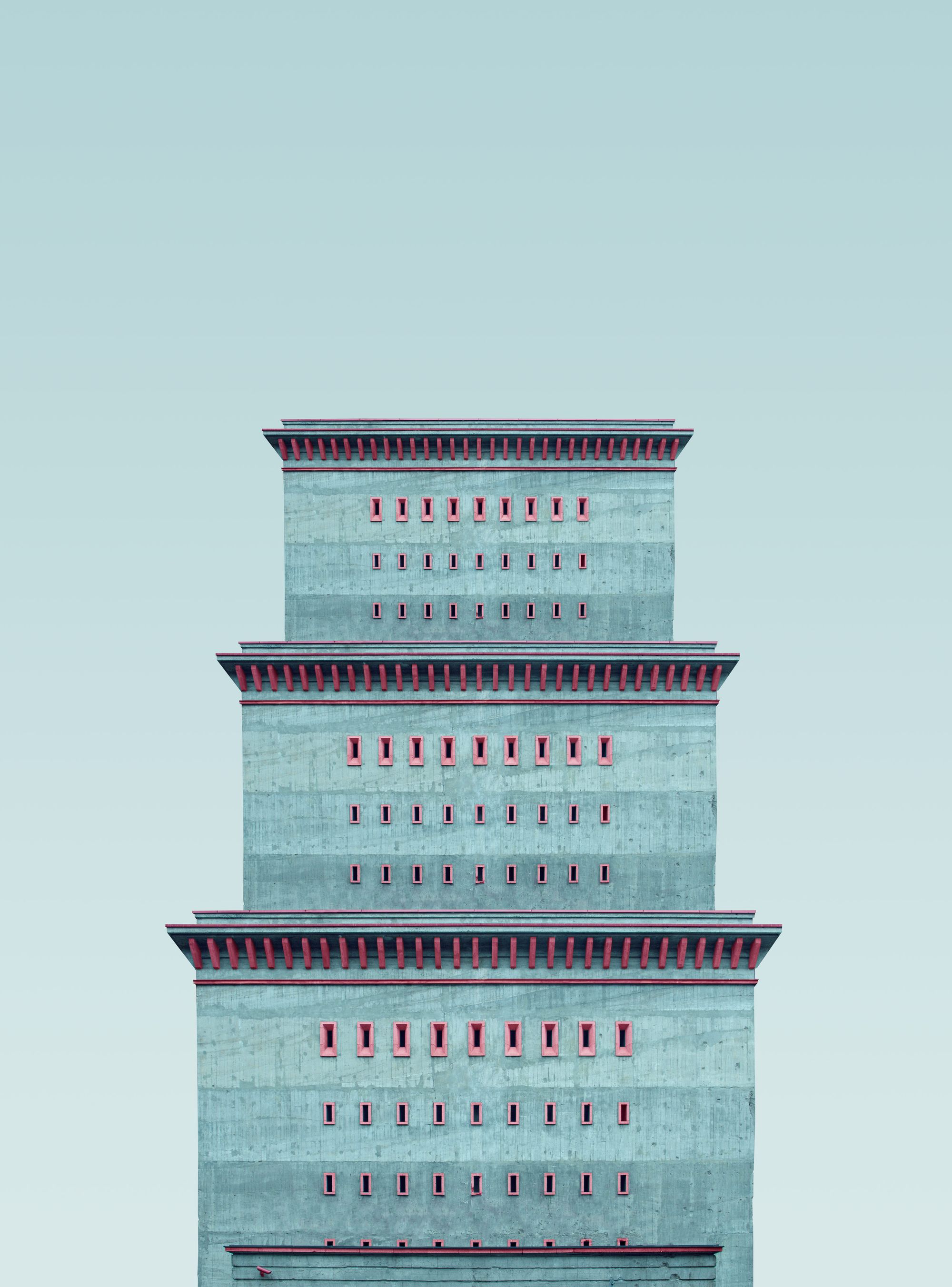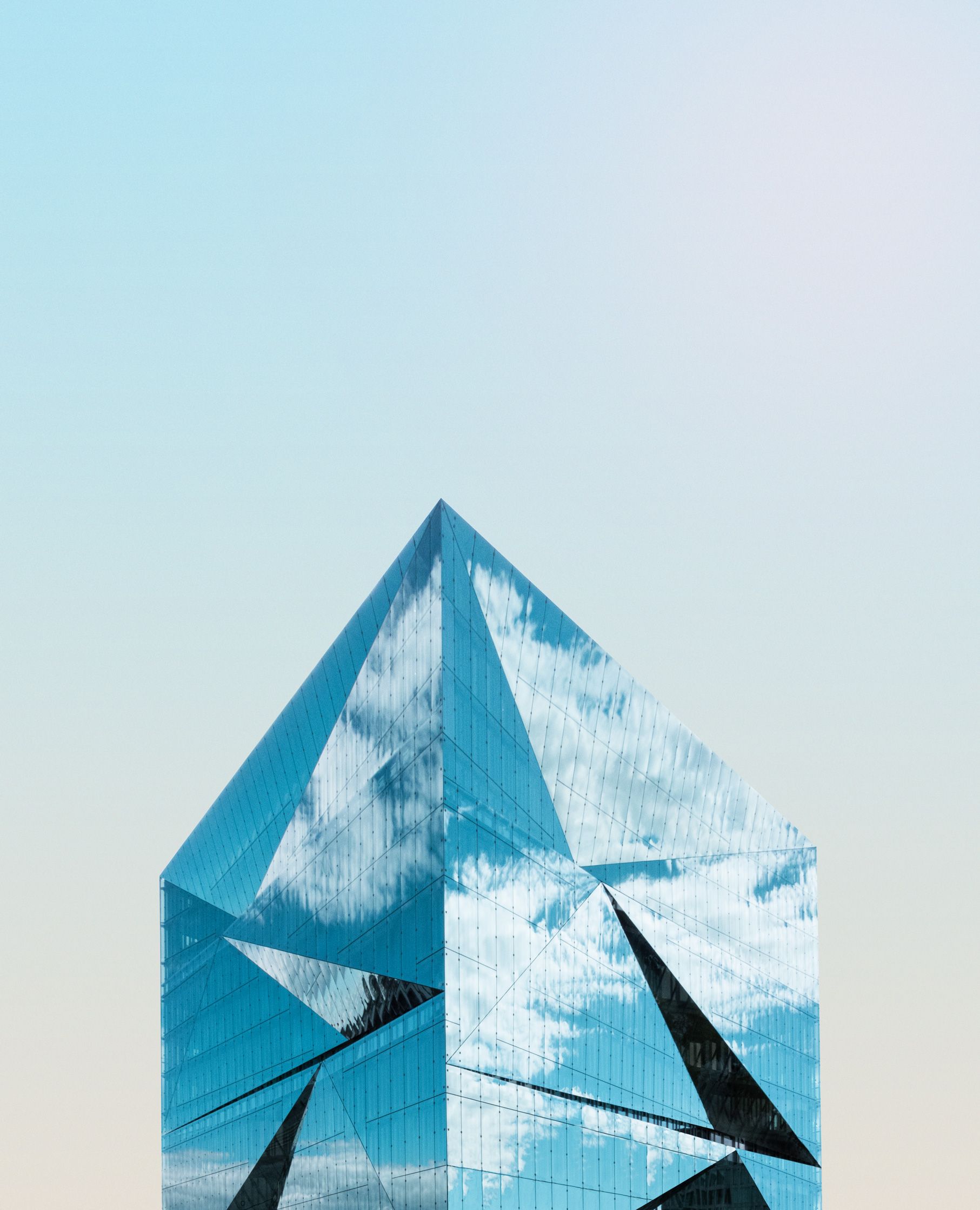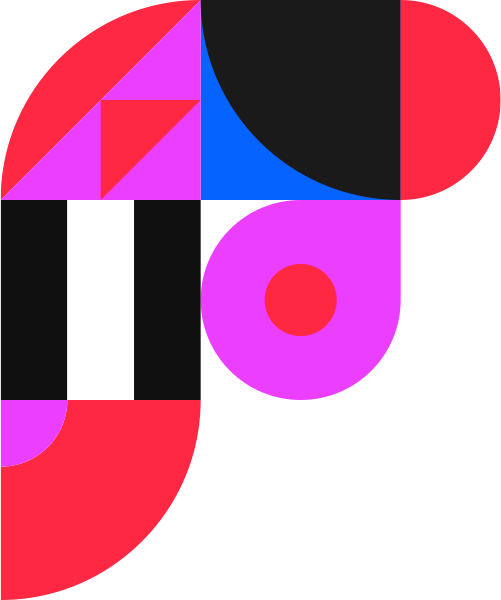Simone Hutsch: Taking the built world as inspiration
We sat down with award-winning artist Simone Hutsch, a 28-year-old, London-based graphic designer and self-taught photographer whose eye-popping architectural mashups are a favorite on sites like Unsplash.

Our primary goal at Facet is to make AI legible to human artists. Facet Specs is a new series of interviews that takes up the other side of that equation: understanding and sharing the stories and insights of photographers and creators, and engaging more deeply with their work and ideas.
We love interviewing all our artists, but we are especially excited to chat with our Artists in Residence to get a sense of their creative process, how they’re using Facet, and what their wildest dreams are for Facet’s future.
To kick off these forthcoming discussions, we sat down with award-winning artist Simone Hutsch, a 28-year-old, London-based graphic designer and self-taught photographer whose eye-popping architectural mashups are a favorite on sites like Unsplash. Below we discuss her creative process, how cycling through the city informs her work, the dovetailing of tech and art, and more.
Edited interview by Facet.
Facet: Your work plays around with buildings. Often, you copy and paste to create structures that are alone in the sky. They're joyful and funny, but there's also a sense of aloneness or…

Simone Hutsch: Yeah, I know what you mean. They are quite isolated and minimalistic, but this draws all the attention to that building so you're more drawn to explore its details—the structures, facades, windows. And I always want to keep this surrealism, the mystery. The viewer doesn’t really know if the building exists as it is or if I edited it.
Facet: What is it that draws you to cities and buildings?
Simone Hutsch: I like being in cities because there's so much to explore. I find architecture inspiring because I like shapes and geometries. It fascinates me how much variety there is and how tall buildings are.
You pass something and you think, “That wasn’t there.” But the building looks quite old, and you realize, “I just hadn't noticed it.”
Facet: So for you, it's a formal exploration, examining the shape of the buildings and pushing the forms they can take. Does your environment impact your work? Obviously, it impacts what buildings you photograph, but does it impact the way you see or approach your work?
Simone Hutsch: Interesting question. My day job is as a graphic designer, so I spend more time designing inside than being outside shooting. With design, I explore shapes and colors, like with my art, but in a different way. When it comes to my own work, it feels like I don't have any restrictions. I can do whatever I want.
And yeah, obviously what I see in the city, in London or Berlin or wherever I am, is really inspiring. I always keep an eye out for good buildings. Different buildings inspire me in different ways, so I adjust my approach slightly to the individual projects.
The viewer doesn’t really know if the building exists as it is or if I edited it.



Facet: How do you place yourself in the history of graphic design or photography? Do you identify with one or the other?
Simone Hutsch: I consider myself to be in between the two. I do photography, but I do so much in post-production, I feel like it's not really a photo anymore.
Facet: Is photography dead?
There’s much more we can do with photos now than in the past.
Simone Hutsch: It just evolves. There’s much more we can do with photos now than in the past. One can do so much in post, so that one don’t really know know if an image is art or still a photo.
I think this is great because photography can now be used as a tool to make art, rather than a technical pursuit like it was in the past.
Maybe there’s a “filter” that you or anyone else could use to take a picture of a building and “Simone-ize” it.
Facet: On the topic of processes, one thing we talk about a lot at Facet is workflow. How do you balance your creative work with your day job, and what do you do to free your mind?
Simone Hutsch: I cycle a lot because it clears my head. Some people run, I cycle. As I cycle through the city, I look at buildings and think, “Oh, look, they're building something new,” or “this is really interesting and I haven't noticed it before.” That's how I keep track of what inspires me. And while I cycle, I think about creative stuff; it’s how I develop my ideas.
Facet: Do you ever pass a building you’ve biked by hundreds of times and “see” it for the first time?
Simone Hutsch: Yeah, don't you do that, too? You pass something and you think, “That wasn’t there.” But the building looks quite old, and you realize, “I just hadn't noticed it.”
That's why I take different routes if I can; it makes you see things from a different angle.
Facet: You've been an artist in residence (AIR) at Facet since September. What’s one way you’re using Facet in your work?
Simone Hutsch: It is quite cool to explore the gradients. Sometimes, you see some color elements in the building and you want to make them balanced. Or, you see something and you want to make it the opposite. I explore through trial and error.

Facet: Got it. How would you feel if you could use AI to generate gradient options? Say you could have a conversation with Facet’s AI and tell it to give you “moody blues” instead of manually selecting a shades; we’re moving in that direction.
Simone Hutsch: That'd be really cool. Then, you have options, nuances of different gradients. That's really something missing with the other tools.
I try to imagine cutting the building out and editing it while I'm standing in front of it.
Facet: Exactly. As an AIR, you’re also now part of the Facet community. Is this influencing your work at all?
Simone Hutsch: It does impact my work more than I thought it would. It’s inspiring when someone asks a question, and then I think, “Actually, I need to explore that.” It makes you realize you can improve or change something, or makes you want to try new things. It pushes me to do something more, something better.
Facet: Yeah, it’s good to be pushed out of your comfort zone. How long have you been making this series of works?
Simone Hutsch: About five years.
Facet: Do you have a sense of what's next?
Simone Hutsch: I'm trying to not move away from static geometry, but I want to allow myself to explore other things. One approach I’m thinking of is a different color concept. Maybe all my next pictures have a white background, for example, or a very, very light gradient—that sort of thing.

Facet: How do you decide which new series or ideas to pursue?
Simone Hutsch: I decide things in my head. I pass buildings I think could potentially be in a series. I try to imagine cutting the building out and editing it while I'm standing in front of it.
I start with one image and see how it works. And then, I keep going. I do my work in a series of, say, five. And then I sleep on it for a while. Every time I wake up and I like it, I know I’ve got something good. I also keep asking myself, “Is this the best I can do? Can I do better?”
It takes consistency to replicate what I do, and a lot of doing it over a long time.
Facet: Let’s switch gears. What if you could sell images without having to make them—if you could automatically generate an image using your aesthetic. Would that interest you?
Simone Hutsch: So I could just press a button, and then I turn just every building into a piece of work?
Facet: Yes. Maybe there’s a “filter” that you or anyone else could use to take a picture of a building and “Simone-ize” it.

Simone Hutsch: There are two sides to it. It’d obviously be amazing from a technical point of view. But on the other hand, I want to be the one that creates these things. As an artist, you do want to be the one that makes that art. It takes consistency to replicate what I do, and a lot of doing it over a long time.
It’s nice to share knowledge and how I do things, though. I don't think other people would use the filter to create art, it’d just be something cool that they do. The filter would be great on social media, it is all about being creative, trying things, doing something cool that people like to see. In that light, a filter would add more value to my work rather than taking it away.
Facet: Since a lot of your work is digital, how do you feel about NFTs?
Simone Hutsch: I’d love to see this evolving. Collaborations where artists sell their NFTs and a percentage goes straight away to charities, for example. Since I’m having my first NFT collection almost sold, it would be great to have the opportunity, instead of losing value due to the conversion.
Facet: Well, thanks for your time. It was interesting to hear about your process. We’re really excited to see what you do at Facet and in the future.
Inspired by Simone and her work on cutouts and gradients? Try out Facet. Sign up for a free trial here.

